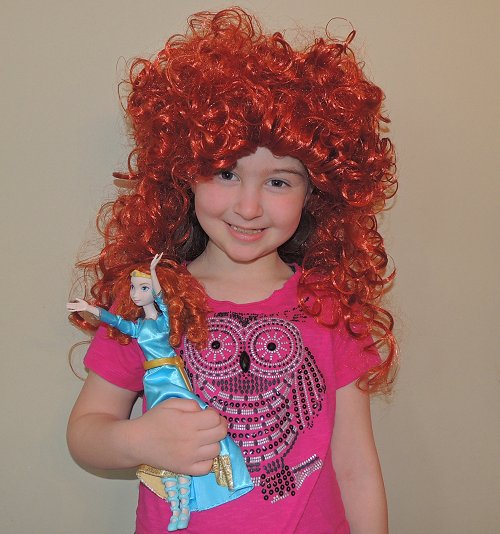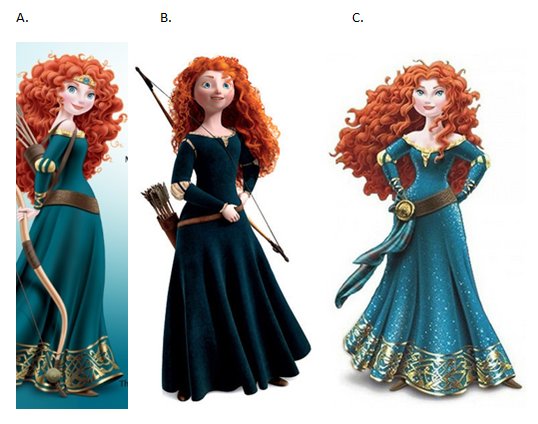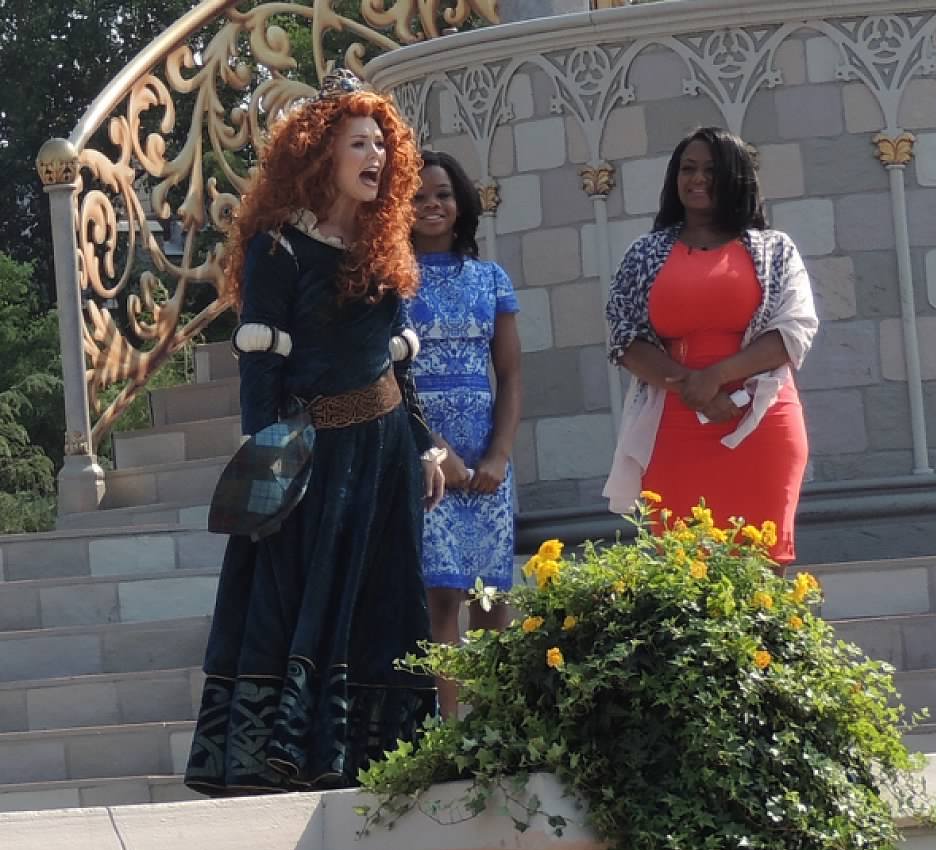“Lead with your values” is good advice for a well-lived life. As it turns out, it is a good practice for brands, too, according to Jackie Huba, author of Monster Loyalty: How Lady Gaga Turns Followers into Fanatics, and a speaker at the Disney Social Media Moms Celebration. Throughout the Celebration / Conference, Disney took the opportunity to highlight the company’s values. As someone who has admitted ambivalence about the “princess culture,” and as a social studies educator, I was very impressed with Disney’s direction.
What then to make of the alleged “Merida Makeover” that had Internets flaming with protest just before Merida’s coronation as part of the the royal court of Disney Princesses?
A little background: For those who have been living under a rock, or at least with no contact with girls ages 4-10, Merida is the Scottish princess from the Pixar / Disney movie, “Brave.” She chafes under the expectations that she should tame her main of red curls, put on a delicate dress, and marry a suitor for the good of the kingdom. She’s also a great shot with a bow and arrow and a rare example of a children’s character who has a loving, if complicated, relationship with her mother.
A few weeks ago, an image appeared showing Merida with a Bratz-style face, lots of make-up, a sparkly low-cut dress, and an impossibly thin waist (made weirder by the already exaggerated proportions of Merida’s round head). Catherine Connors, a Disney employee as well as a deep thinker and a blogger I respect and admire, has shared the official story that the Merida makeover was just a one-time “iteration,” or a piece of “concept art,” and was never intended to be a new image for Merida. There are many variations on Merida on various marketing sites and products, including a Merida “toddler” doll, but the only place I can find the widely-circulated “new” Merida image is on Target’s website. There was a two-dimensional Merida on our Disney Social Media Moms invitation to the coronation and her dress was a lighter teal but she still had her bow and arrow and she didn’t have clubbing make-up. When all the “princesses” are shown together, they need to share a similar animation style that makes it appear as if they are part of the same reality. The trick is to retain Merida’s individuality while still making her seem as if she comes from the same universe.
Frankly, the Merida image on the Target page (look C) appears creepy to me. I can’t imagine it selling a whole lot of merchandise. There’s a lot I could say about the sexualization of images marketed to young children and whether or not a one-time piece of marketing art matters but Jenny at The Bloggess, Amy at Resourceful Mommy, Monica at Wired Momma, and Katherine Stone, Cecily, and Pilar Clark, at Babble have already covered most of it. So, instead I asked my six year old daughter what she thought of the images of Merida.
She described Merida as “brave” and then began describing the plot point that Merida didn’t want to marry anyone. She liked image B the best because Merida had a bow and arrow and looked more like she did in the movie. She did say that the Target image (C) looked like she was dancing but said she did not like the face because the eyes looked “sharp.” She still preferred the dress and face on image B. She liked that image A (from the coronation invitation) showed Merida with her bow.
So, while I am a bit disturbed that Disney would agree to a marketing image so antithetical to Merida’s message for Target, I am reassured that my daughter “gets” what Merida is really about. In the end, toys and dress-up clothes and other products are just props for our children’s imaginative play. When her first grade teacher asked them what they would do if they were stuck in a tower (a la Rapunzel), my daughter said she would rescue herself.
I think she needs this “Self-Rescuing Princess” t-shirt from Her Universe, whose founder, Ashley Eckstein, was another speaker at the conference.
The stories, the merchandising, the marketing, it all matters…but it doesn’t matter nearly as much as how these things inspire our girls and boys. Even more important is how we, as parents, guide our children through these issues.
Disney has always been about dreaming big and telling engaging stories. They are also taking this new, interactive age very seriously, however, and I am not just talking gadgets. Disney has reached into its rich body of lore to empower its audience with the values of loyalty, curiosity, confidence, kindness, sacrifice, determination, and more.
Sure, it takes a bit of a stretch to see Ariel as a feminist role model but if a little girl who loves mermaids sees the tale as one of adventure and curiosity, then I’m all for a little revisionism. Accuse me of drinking the Kool-Aid if you will but when a Merida rode in on Angus, stomped on stage, and shouted, “I am strong. I am brave. I am Merida. I am a princess,” I had chills.
Now that Disney has the attention of little girls everywhere, they seem to be asking them, “What kind of strong woman are you becoming?”
—
Disclosure: As an invited guest of everyone’s favorite mouse at the Disney Social Media Moms Celebration 2013, for a small conference fee I received, in addition to access to the conference, a host of other magical gifts (including a free copy of Monster Loyalty and the Merida wig and Merida doll that appear above) and amazing benefits to facilitate my learning and enjoyment of Disney World Parks with my family. I paid for my own transportation to and from Florida as well as for follow-on accommodations after the conference. As always, my time can be hired but not my opinions are not for sale.




What’s Going down i’m new to this, I stumbled upon this I’ve found It absolutely useful and
it has aided me out loads. I hope to contribute & help different
customers like its helped me. Great job.
They are usually based on closing m.a.c makeup prices. The system is based on moving average crossovers. It is important to remember that a shorter average moves faster than a longer one. As an example, a 5-day average moves faster than a 15-day average. You would get a buy signal when the shorter, or faster average advances above the longer, or slower average. A sell signal would take place when the shorter average crosses below the longer one.